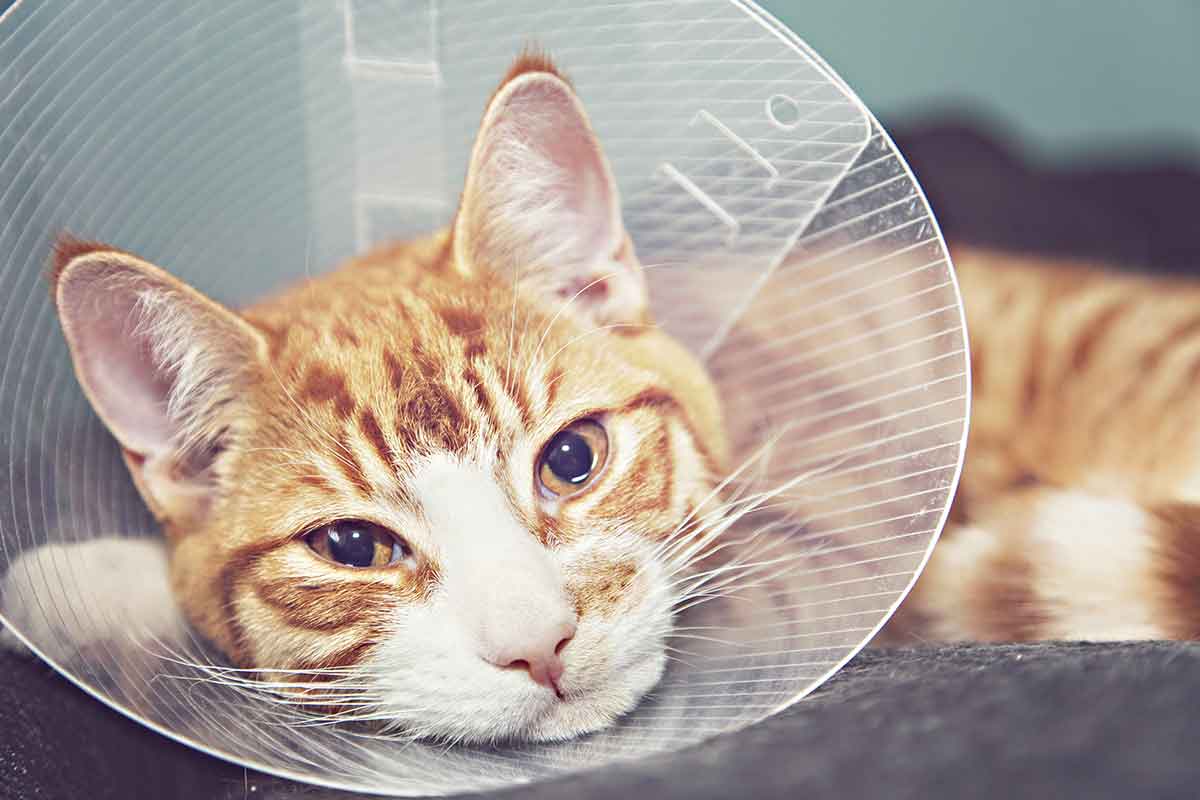Do cats really feel pain? Probably many readers think that just isn’t true. But in fact pain is a common malady shared by all mammals. If something is painful to a human, it is likely painful to a cat.
But the feline mystique pervades pain and pain management just like it pervades which food our kitty might think is worthy of its attention this week. Cats are masters at hiding pain, which is an evolutionary survival mechanism. Unfortunately, that means that we often miss the fact that our cats are in pain.
As anyone who has experienced pain knows, life can be pretty miserable if pain isn’t controlled. Normal daily activities like sleeping, eating, and moving can be very difficult for people and animals in pain. Pain also affects health and can cause ill effects such as stomach problems, abnormal heart rhythms, and poor wound healing.
Even behavior can be affected. Do you feel grumpy and unwilling to participate in family time when you are painful? Well, your cat likely feels the same way. Pain can cause fear, anxiety, and stress, so relief of pain is a major goal of the Fear Free movement.
There are many new medicines and techniques used to treat pain in people, but what is new for cats? Not as many drugs–yet! But there are a few new medicines available now and some old ones being used in new ways. And more medicines are on the horizon so stay tuned! Let’s talk about the new medicines: Onsior®, Simbadol® and Cerenia®.
Did you learn from consulting Dr. Google to fear the side effects of non-steroidal anti-inflammatory medicines (NSAIDs) in cats? Well, it is time for a new lesson from the true expert, your veterinarian. These medicines relieve pain from inflammation (heat and swelling), which is a major component of most types of pain, making this a very important drug class for pain relief. However, cats can respond to NSAIDs differently than dogs so it is very important to use the right NSAID at the right dose in cats.
The current fear of this drug class arose primarily from the fact that cats often received dog dosages, causing side effects. There is a new NSAID, Onsior, available just for cats with lots of safety research to back-up the recommended dose – and lots of efficacy data to prove that Onsior really works to relieve pain in cats! And good news for the cat owner, Onsior comes as a yummy chewable “treat,” so most cats will eat it without fuss.
Opioids are among the most potent medicines available for treating pain. Medicines such as morphine are used in both dogs and cats, and now there is a new injectable opioid approved only for use in cats (no dogs allowed!). An advantage of this new medicine, Simbadol, is that the pain relief from one injection lasts 24 hours. This medicine is most commonly used during surgery so that your pet is more comfortable postoperatively.
Cerenia (maropitant) may be familiar to you as a medicine that keeps cats from vomiting. The medicine is also used in the hospital to keep your cat from vomiting after receiving cancer or anesthesia medicines. Interestingly, maropitant also contributes to pain relief, especially in patients with stomach pain, and it is now commonly used as part of the pain management protocol for pain following surgery.
Although not new, ketamine and gabapentin are being used in new ways. Infusions of ketamine and higher dosages for gabapentin may be effective in some pets.
Because of the negative impact of pain on your cat’s health and behavior, your veterinarian needs you to be part of the pain management team. One of the most specific signs of pain is change in behavior. Has your cat suddenly stopped using the litter box or sleeping some place other than up in his favorite sunny windowsill? Such changes may be due to a variety of medical issues, including pain. We can’t administer the new analgesic medicines unless we know your pet is experiencing pain. To keep your pet healthy and enjoying time with you, talk to your veterinarian about signs that mean your cat is in pain.
This article was reviewed/edited by board-certified veterinary behaviorist Dr. Kenneth Martin and/or veterinary technician specialist in behavior Debbie Martin, LVT








